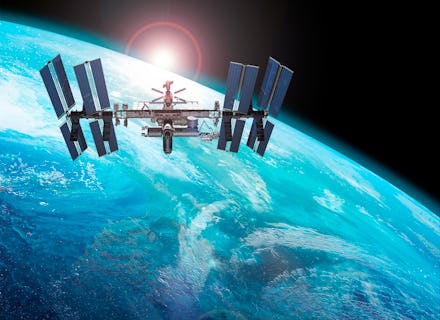NASA Wants to Go Deeper Into Space. Here's Why It Can't.

In the immortal words of Billy Joel, "I'm movin' out."
That's the gist of what NASA's chief of human spaceflight, William Gerstenmaier, said about NASA's plan to move beyond the International Space Station and pursue cislunar orbit, which is the area in the Moon's orbit.
The ISS has been NASA's low-orbit base of operations for the last 15 years, but now conversations point to leaving the station to venture farther into space. "We're going to get out of ISS as quickly as we can," Gerstenmaier said, according to Ars Technica. "Whether it gets filled in by the private sector or not, NASA's vision is we're trying to move out."
There's good news and bad news here. First, the good: The move is what you might call Phase 2 on NASA's Journey to Mars, which they presented back in October. Phase 1, the "Earth Reliant" stage, was doing the research aboard the ISS to figure out how humans will survive, eat and behave in space. It tested the limits of advanced communications systems, 3-D printed in space and ran missions outside a spacecraft.
Phase 2, called "Proving Ground," is where NASA tries to master complex operations in deep space. Its goal is to continue to be able to send astronaut crews back to Earth in days instead of weeks.
Here's where it gets exciting: This is the stage where we figure out beyond a doubt how to explore Mars. It means testing the colossal Space Launch System rocket along with the Orion shuttle in 2018, taking samples from a large asteroid, exploring better means of recycling to keep resupply costs down and building a real-deal deep-space habitat for testing long-term systems.
Now, the bad news: NASA can't afford to keep working on the ISS and venture further out into space, since its budget will probably be a space-paltry $4 billion by 2020. So all of those ISS supply-mission contracts that let the private space sector bring home the bacon — think Elon Musk's SpaceX and Amazon boss Jeff Bezos' Blue Origin — will probably dry up in a couple years.
NASA says it wants the private space companies to get use out of the station, since letting $140 billion of human ingenuity and interstellar sportsmanship go the way of a failed amusement park seems ludicrous — though, the ISS was a joint effort between 15 countries and is larger than a football field, so it might be a touch too much machine for a single private entity. But who knows, right?
"We really want to open up low-Earth orbit to the terrestrial markets, and I want the private sector to explore," said NASA Administrator Charles Bolden, according to Ars Technica, adding that there's huge potential in low-Earth orbit for commercial industries.
Whatever happens, NASA, with billions of dollars in plans coming in the next decade, can't wait around for someone to pick up the reins in its wake. It has to cut bait to move on to bigger — and celestially deeper — things.